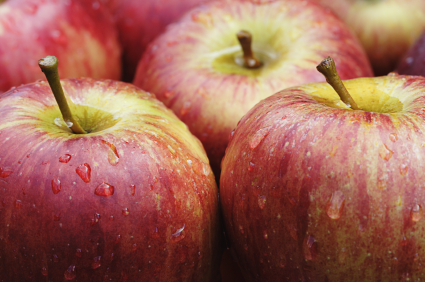The Difference between Hybridization and Genetic Engineering
Finally, a topic that brings together my horticulture education and health knowledge!
As I read many health articles online, I feel there is a general confusion about what genetic modification really means – particularly that people are confusing this with hybridization.
For the record, my position is firmly anti-GMO, but I am most definitely pro-Facts. And the fact is that we are all eating hybrids every single day, as most of the produce in the grocery store is hybridized. Which does NOT necessarily mean that it’s genetically modified – the two do not go hand in hand.
Hybridization is the crossing of two different parent species. Many plants within the same Genus are receptive to cross-pollination. Pollen from the male parts of a plant (stamen) gets transferred via bees, wind etc to the female part of a flower (pistil). The ovary of the female develops and produces seed – this seed results in a plant that carries the characteristics of both parent plants.
This is a commonly occurring phenomenon that takes place in nature (much to the exasperation of taxonomists!) It’s also a process that can be purposefully handled by humans, with humans playing the role of the bee. Either way, the process is the same, and pollen is transferred from one parent to the other. When humans get involved, the intention is to create a hybrid plant that carries the most desirable characteristics of two carefully chosen parent plants.

Fuji is a hybrid apple. It was developed by hybridizers in Japan by crossing a Red Delicious with a Ralls Janet – resulting in an apple that carries the sweetness of a Red Delicious, along with the benefits of lasting well in storage that comes from Ralls Janet. The new hybrid apple was named Fuji because of where it was created.
Such is the case with Canola, which is a highly misrepresented plant. Blogs decry that Canola doesn’t exist in nature, that it’s a genetically modified franken-crop. The bloggers write, “olive oil comes from olive trees, sunflower oil comes from sunflowers, but there is no Canola plant.” To be fair, there is also technically no Arbequina plant, or Leccino plant, or Mission plant. Yet if you use olive oil you are likely consuming at least one of these, because all three are the hybrid names of olive producing trees.
The fact is that Canola is simply a name given to a hybrid of rapeseed (a plant in the Brassicaceae family which includes broccoli, kale, turnips). The species Brassica napus (rapeseed) contains high levels of unpalatable and unhealthy substances, which are not suitable for human consumption. However, through cross-breeding, the undesirable qualities of rapeseed were eliminated while retaining the beneficial qualities.

The resulting hybrid rapeseed plants are named Canola – Can (Canada), ola (oil), as the hybridization was done in Canada.
Since that hybrid was created in the 1970’s, scientists discovered genetic engineering and there are now GM strains of the original hybridized Canola plants. This is where things get ugly and I’ll get into that below. However, while the majority of modern canola plants being grown in North America are genetically engineered, there are still non-GM varieties in cultivation around in the world in countries that have rejected the use of genetically engineered crops. And there are also manufacturers that use cold-pressed, non-chemical processing to extract the oil from the rapeseed.
Genetically Modified Organism (GMO)
This is where the expression ‘FrankenFood’ starts to make sense. Genetic engineering, unlike hybridization, involves scientists placing DNA from one species into an unrelated species. In nature, there would never be an instance where genes from a bacteria or virus, and a plant would mix together. This must take place in a lab.
Crop plants are genetically altered to produce resistance to herbicides and insects. So what you end up with is a plant such as soy that can resist being sprayed with the chemical glyphosate, which would normally kill any broad-leaved plant it comes in contact with. Or, a corn plant that has been genetically engineered to be pest resistant contains DNA from bacteria that create an insecticidal effect when bugs take a bite.
I would need another blog post to get into why I and many others believe that consuming food that’s been genetically altered to resist chemicals and kill bugs is likely a very bad idea.
Essentially it comes down to common sense in my opinion – don’t mess with Nature. There is a perfect order and balance that occurs in nature and humans are foolish to believe they can improve on that in a laboratory. There are and will be more negative consequences to altering the DNA of our food.
Which is why I do my very best to make conscious choices about the food that I buy and consume, and avoid GMO’s as much as possible. Hybrids on the other hand… bring them on!! I LOVE Fuji apples! In fact, I just planted a non-GMO, hybrid, grafted, Fuji apple tree in my back yard!
Want to weigh in? Head on over to the Bluleaf Facebook page and leave a comment on this post https://www.facebook.com/Bluleafliving
In good health,
~kristi
© Kristi Bellis and Bluleaf Living, 2014. Unauthorized use and/or duplication of this material without express and written permission from this blog’s author and/or owner is strictly prohibited. Excerpts and links may be used, provided that full and clear credit is given to Kristi Bellis and Bluleaf Living with appropriate and specific direction to the original content.